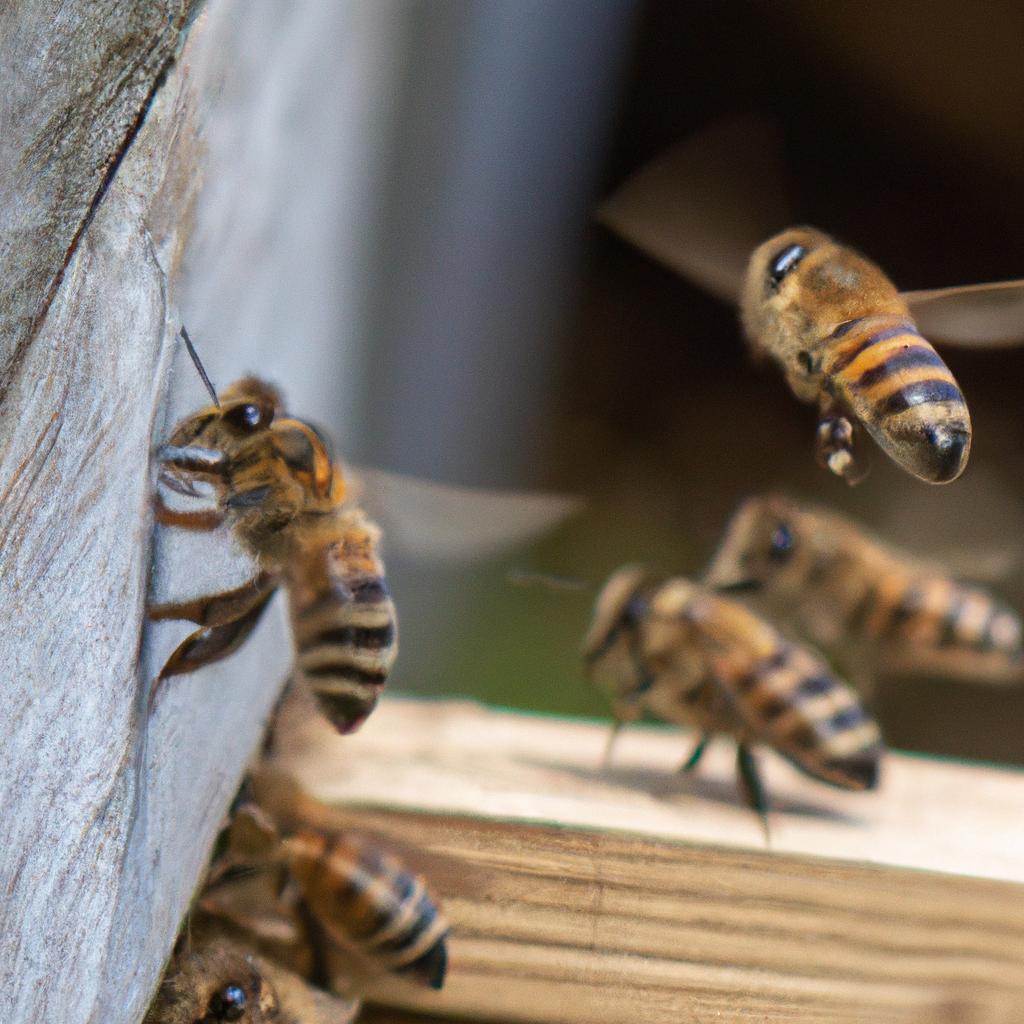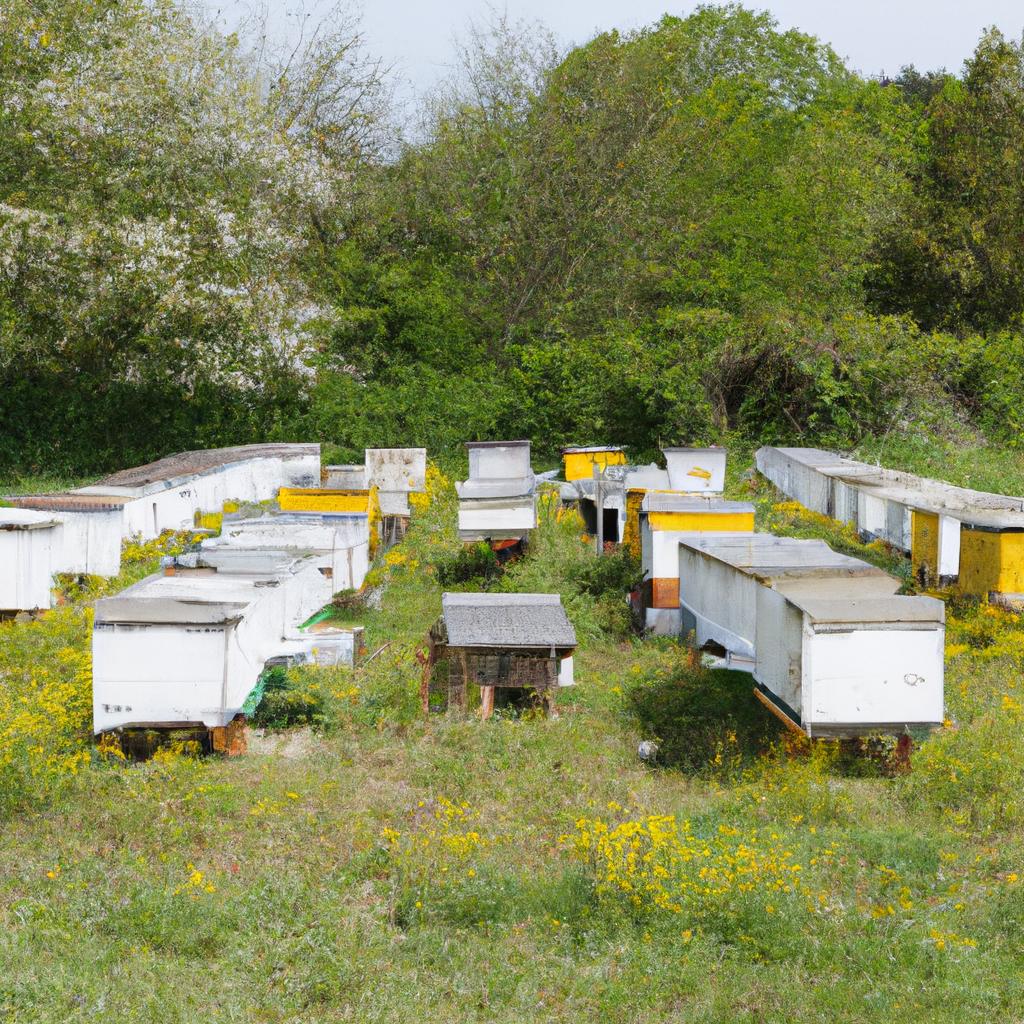If you’re a fan of honey, you may have wondered how long it takes for bees to make this delicious treat. Honey is a fascinating and essential product of the beekeeping industry. Bees are responsible for pollinating many of the foods we eat, and honey is a valuable source of nutrition and medicine. In this article, we’ll discuss the process of honey production by bees, the factors that affect honey production, the time frame for honey production, and how to harvest honey.
The Honey Making Process

Honey production is a complex process that starts with bees gathering nectar from flowers. Bees use their long, tubular tongues to extract nectar from flowers and store it in their honey stomachs. The nectar is then mixed with enzymes in the bees’ stomachs, breaking it down into simpler sugars that are easier to digest.
Once the bee returns to the hive, it regurgitates the nectar into the mouth of another bee, who repeats the process until the nectar is partially digested. The partially digested nectar is then deposited into a honeycomb, where it is further processed through evaporation and fanning by the bees’ wings. The bees fan the nectar to remove excess moisture, thickening it into honey. Finally, the bees cap the honeycomb with wax to seal the honey inside.
The honey-making process is a team effort, with each bee performing a specific task to ensure the successful production of honey. The process can take anywhere from a few days to several months, depending on various factors that affect honey production.
Factors Affecting Honey Production

Several factors can affect the production of honey by bees. One of the most critical factors is the type of flower visited by the bees. Different flowers produce nectar with different levels of sugar content, which can affect the quality and quantity of honey produced.
Weather conditions can also impact honey production. Too much rain or wind can prevent bees from leaving the hive to gather nectar, while too much heat can dry up the nectar sources, reducing the amount of nectar available for honey production.
The size and strength of the bee colony also play a significant role in honey production. A larger and more robust colony can produce more honey than a smaller, weaker colony. Additionally, a queen bee’s age can affect honey production, with younger queens typically producing more honey than older queens.
Understanding these factors can help beekeepers optimize honey production and ensure a successful harvest. In the next section, we’ll explore the time frame for honey production and how to determine when honey is ready for harvest.
Factors Affecting Honey Production (continued)
Availability of nectar is another crucial factor that can affect honey production. The abundance of nectar sources in an area can determine the amount of honey that bees can produce. Beekeepers can increase honey production by planting flowers and plants that provide nectar for bees.
The size and strength of the bee colony also play a significant role in honey production. A larger and more robust colony can produce more honey than a smaller, weaker colony. Additionally, a queen bee’s age can affect honey production, with younger queens typically producing more honey than older queens.
Time Frame for Honey Production
The time frame for honey production can vary depending on various factors that affect honey production. On average, it takes bees around two to three weeks to produce honey from nectar. However, the duration can be influenced by several factors such as the type of flower visited by bees, weather conditions, availability of nectar, and the size and strength of the bee colony.
The duration of honey production can be affected by the type of flower visited by bees. Different types of flowers produce nectar with varying sugar content, which can affect the quality and quantity of honey produced. In areas with a high abundance of nectar sources, bees can produce honey faster than in areas with limited nectar sources.
Weather conditions can also impact the duration of honey production. Bees need warm and dry weather to gather nectar and produce honey. If the weather is too wet or cold, bees may not leave the hive, which can delay honey production.
The size and strength of the bee colony can also affect the duration of honey production. A larger and more robust colony can produce honey faster than a smaller, weaker colony. Additionally, the presence of a young and healthy queen bee can increase honey production and reduce the time needed to produce honey.
The time frame for honey production can also vary depending on the region. In areas with a high abundance of nectar sources and favorable weather conditions, bees can produce honey faster than in areas with limited nectar sources or harsh weather conditions.
Understanding the factors that affect the duration of honey production can help beekeepers optimize honey production and determine the best time to harvest honey. In the next section, we’ll explore the signs that honey is ready for harvest and the techniques for harvesting honey.
Harvesting Honey
Harvesting honey is a crucial process that must be done correctly to ensure the quality and safety of the honey. One of the most critical steps is determining when the honey is ready for harvest. There are several signs that indicate that honey is ready for harvesting, such as the wax caps on the honeycomb being fully sealed and the honey being thick and viscous, with a moisture content of less than 18%.
Once the honey is ready for harvest, beekeepers use various techniques to extract the honey from the honeycomb. One of the most common methods is using a honey extractor, which uses centrifugal force to remove the honey from the comb without damaging it. Another method is cutting the honeycomb and draining the honey into a container.
Regardless of the method used, it’s essential to handle the honey with care to maintain its quality and prevent contamination. Beekeepers should wear protective clothing and use clean equipment to avoid introducing bacteria or other contaminants into the honey.
Conclusion
In conclusion, honey production by bees is a complex and fascinating process that takes time, effort, and teamwork. The time frame for honey production can vary depending on various factors, such as the type of flower visited by the bees, weather conditions, and the size and strength of the bee colony. However, on average, it takes bees about six weeks to produce one pound of honey.
Honey is an essential product of the beekeeping industry, with many uses in human consumption and medicine. It’s crucial to understand the honey-making process and proper harvesting methods to ensure the quality and safety of the honey. BeeKeepinglove.com is committed to providing information and resources to help beekeepers and honey enthusiasts learn more about bees and honey production.
